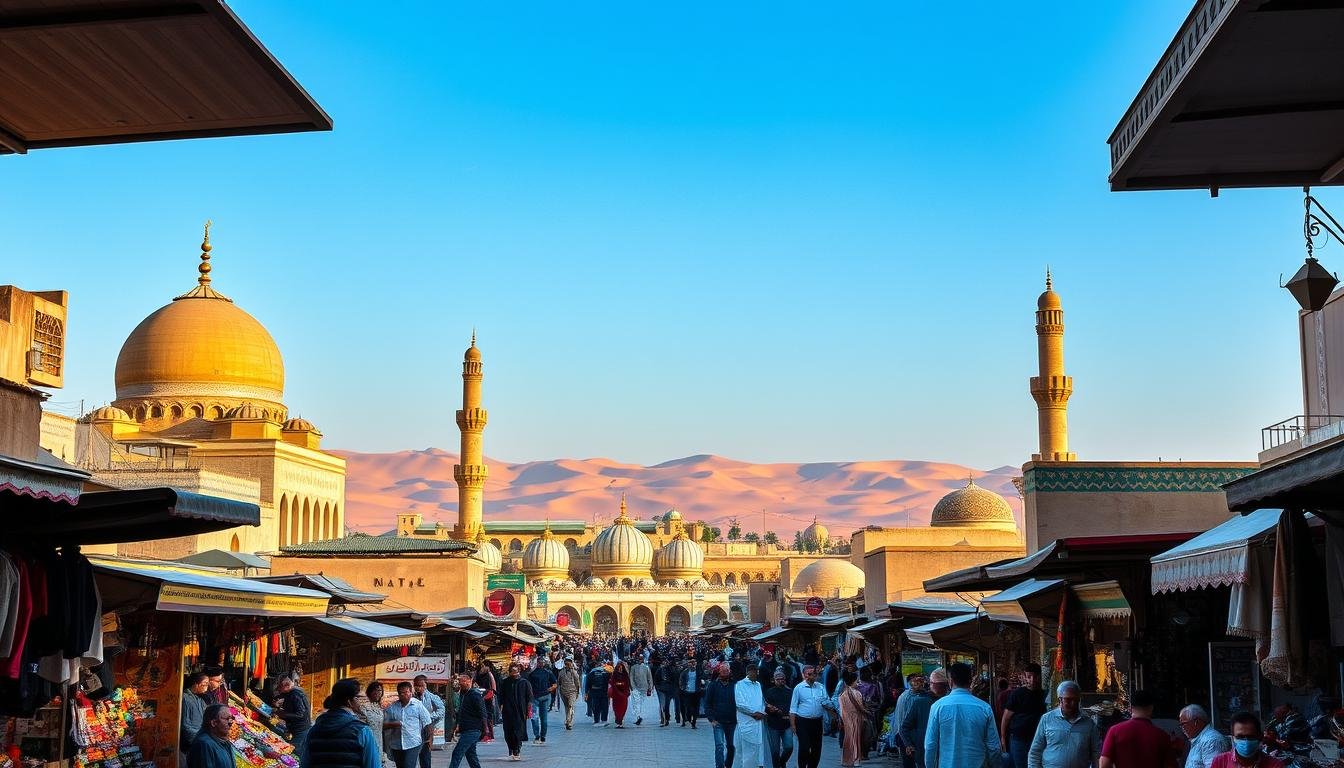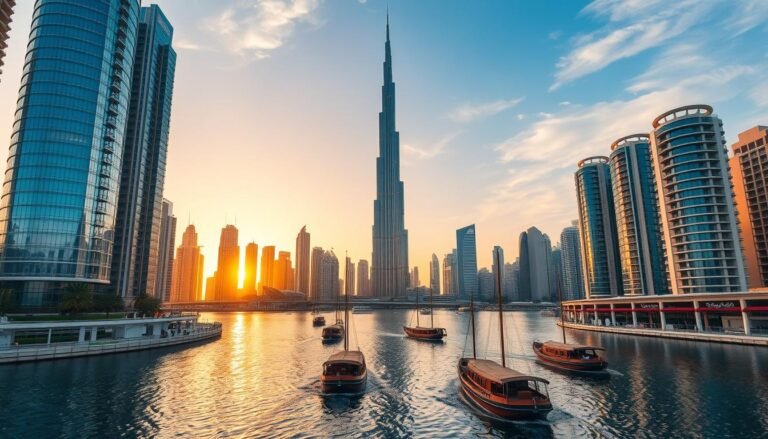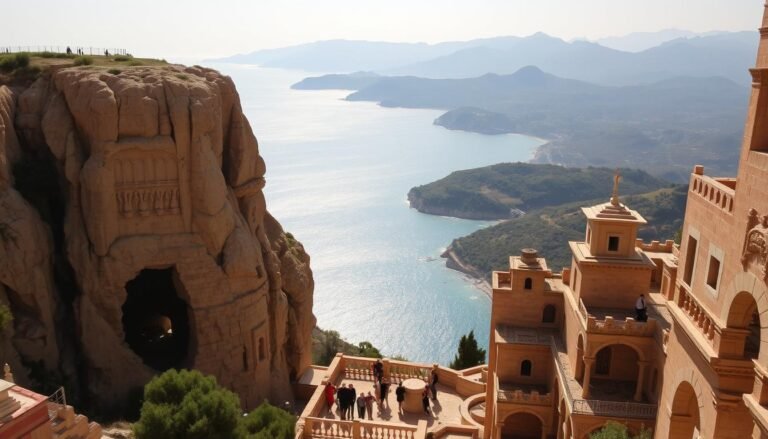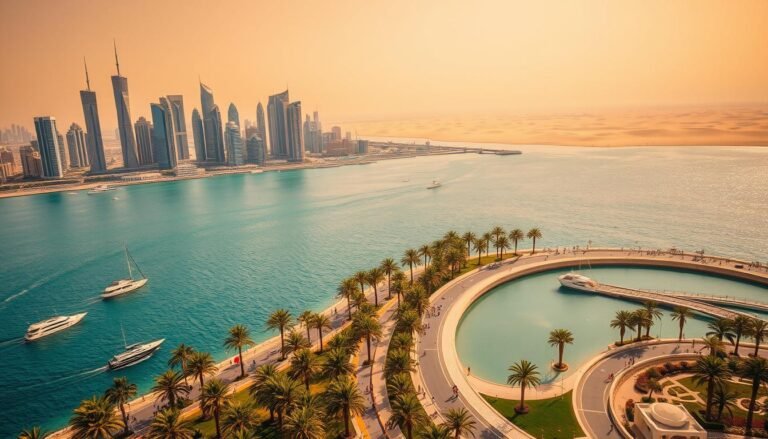Best Places to Visit in the Middel east: A Complete Travel Guide
Visit Middel East: The Middle East is a treasure trove of historical landmarks, cultural experiences, and breathtaking natural beauty, making it a fascinating destination for travelers worldwide.
This region is home to ancient city ruins, modern metropolises, and everything in between, offering a unique blend of tradition and innovation.
From the historic sites that dot the landscape to the stunning beauty of its deserts and coastlines, the Middle East is a place where the world‘s history comes alive.
Whether you’re drawn to the bustling streets of its vibrant city or the serene tranquility of its untouched landscapes, this guide will help you discover the best places to explore.
Discovering the Wonders of the Middle East
The Middle East, a region often misunderstood, is a treasure trove of diverse cultures, historical landmarks, and breathtaking landscapes. This distortion of reality changes people’s perception to the extent that the whole region becomes a dangerous place to travel to, as if it were one single country.
Many travelers hesitate to visit the Middle East due to misconceptions about safety, but numerous countries in the region are welcoming and secure for tourists. The stereotype of the Middle East as a homogeneous region fails to recognize the vast differences between countries.
What Makes the Middle East a Unique Travel Destination
The Middle East is home to a variety of cultures, traditions, and landscapes, making it a unique travel destination. Daily life in Middle Eastern cities often combines traditional elements with modern conveniences, creating vibrant urban environments.
| Country | Main Attraction | Unique Feature |
|---|---|---|
| UAE | Dubai’s Skyline | Blend of Modern and Traditional Architecture |
| Jordan | Petra | Ancient Historical Site |
| Oman | Muscat | Blend of Ancient and Modern Culture |
Breaking Down Middle Eastern Stereotypes
While certain areas face political challenges, painting the entire region with one brush ignores the many peaceful, stable countries eager to welcome international visitors. Cultural differences exist, but hospitality toward guests is a consistent value across Middle Eastern countries.
- The region offers a mix of traditional and modern experiences.
- Countries like UAE and Jordan showcase the diversity within the Middle East.
- Travelers can enjoy vibrant urban environments and historical landmarks.
Why You Should Visit Middle East Now
As one of the world’s oldest cultural hubs, the Middle East offers an unparalleled travel experience. The region is a melting pot of cultures, with a rich history that spans thousands of years.
Cultural Richness and Historical Significance
The Middle East is home to some of the world’s most significant historical landmarks, including ancient cities and monuments. The aromas of incense and coffee waft through the markets and diverse quarters, enhanced by the spices used in local cooking. Visitors can immerse themselves in the local culture by exploring the bustling markets and bazaars, where they can observe local life, practice bargaining, and purchase unique handicrafts.
Key Cultural Highlights:
- Historic landmarks and ancient cities
- Vibrant markets and bazaars
- Traditional cuisine with aromatic spices
| Cultural Experience | Description |
|---|---|
| Visiting ancient cities | Explore historical landmarks and monuments |
| Exploring markets and bazaars | Immerse yourself in local culture and commerce |
| Savoring local cuisine | Enjoy traditional dishes flavored with aromatic spices |
Hospitality and Authentic Experiences
Middle Eastern hospitality is legendary, with locals often going out of their way to welcome visitors and share their culture. Travelers can enjoy authentic culinary experiences, from street food to elaborate traditional feasts. By taking the time to sit in a local café, enjoy traditional music, or participate in cultural celebrations, visitors can deepen their connection to the places they visit.
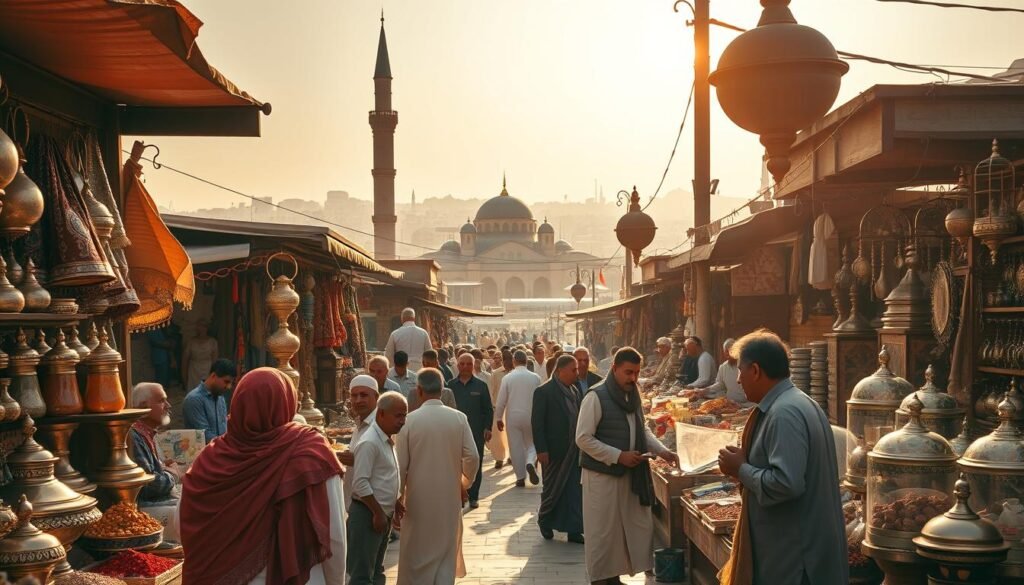
- Traditional culinary experiences
- Local hospitality and cultural sharing
- Cultural celebrations and events
United Arab Emirates: Modern Marvels and Desert Beauty
The United Arab Emirates is a land of contrasts, where modern marvels stand alongside breathtaking desert landscapes. This blend of tradition and innovation makes the UAE a fascinating destination for travelers.
Dubai: Where Tradition Meets Futuristic Vision
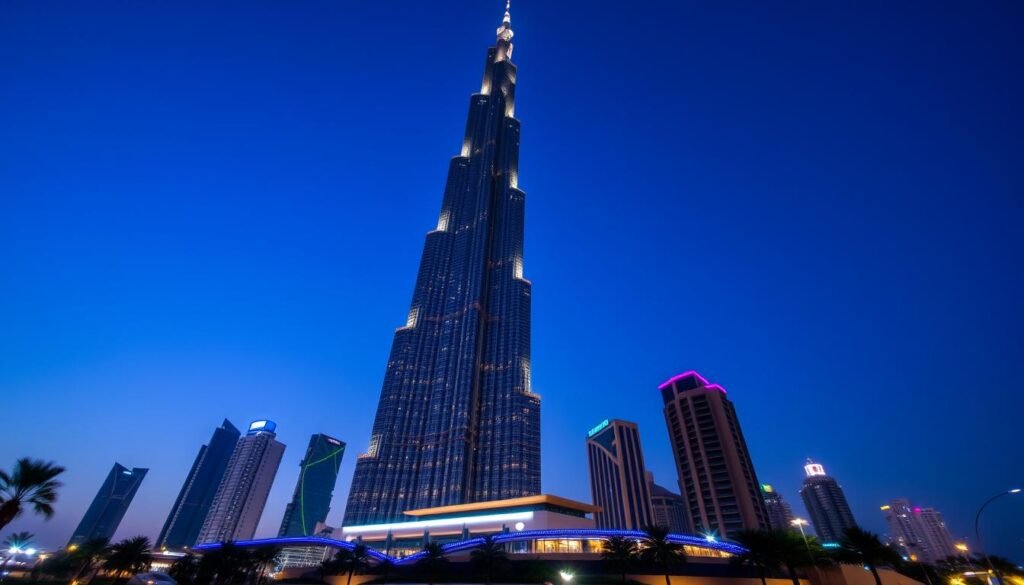
Dubai is a city that embodies the spirit of innovation and luxury. From the iconic Burj Khalifa to the expansive Dubai Mall, the city offers a plethora of experiences that blend tradition with futuristic vision. Visitors can explore the historic Al Fahidi district, enjoy the traditional souks, or relax on the pristine beaches.
Abu Dhabi: Cultural Capital and Architectural Splendor
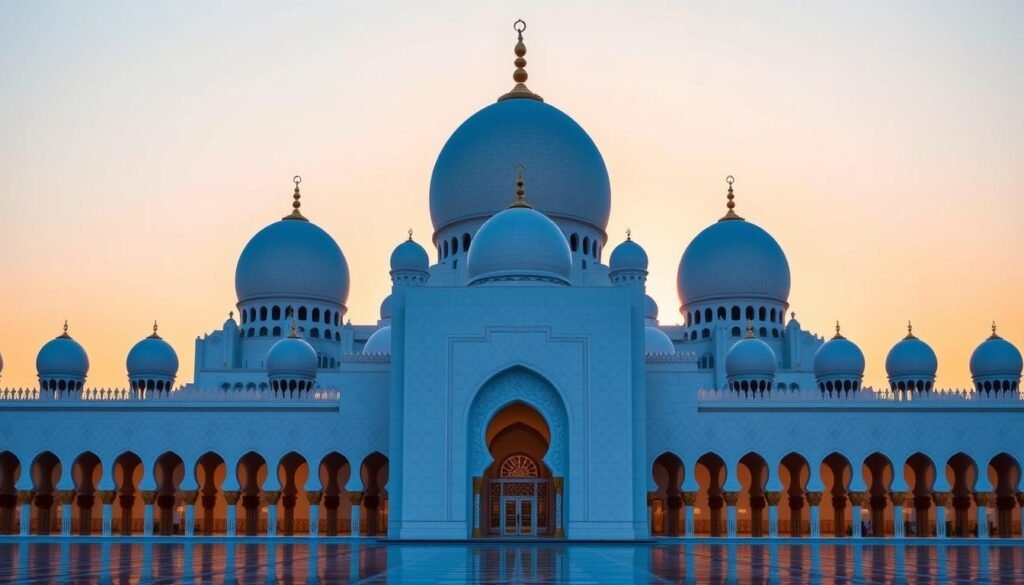
Abu Dhabi, the capital city of the UAE, is renowned for its cultural attractions and architectural splendor. The Sheikh Zayed Grand Mosque is a must-visit, featuring intricately tiled marble domes and the world’s largest hand-knotted carpet. The mosque’s serene courtyards and impressive chandelier in the main prayer hall are truly breathtaking.
The city’s culture is further enriched by Saadiyat Island, which has become a world-class cultural district with the Louvre Abu Dhabi and upcoming museums like the Guggenheim Abu Dhabi. Just outside the city, the vast Liwa Desert offers opportunities to experience traditional Bedouin culture amidst spectacular dune landscapes.
Abu Dhabi’s Corniche provides a beautiful contrast to the desert, with its manicured beaches and cycling paths offering stunning views of the city‘s skyline. This blend of modern architecture and natural beauty makes Abu Dhabi a unique place to visit in the UAE.
Oman: The Middle East’s Hidden Gem
Tucked away in the southeastern corner of the Arabian Peninsula, Oman is a hidden gem. With its unique blend of traditional and modern attractions, Oman offers a diverse range of experiences for travelers.
Muscat: A Blend of Ancient and Modern
Muscat, the capital city of Oman, is a fascinating blend of old and new. Visitors can explore the historic forts, museums, and traditional souks, or indulge in modern luxuries like upscale shopping malls and fine dining restaurants.
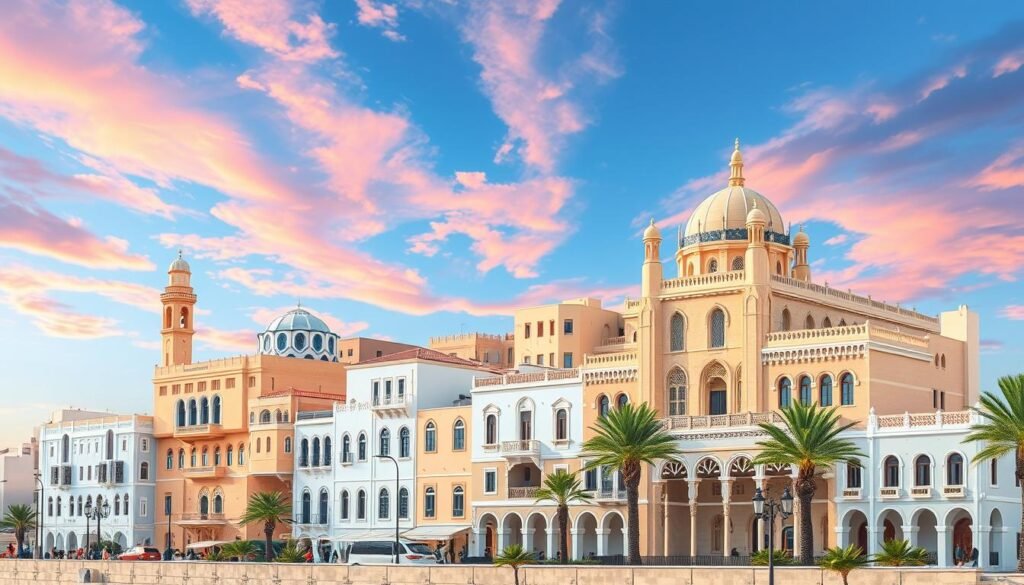
Wadi Shab and Daymaniat Islands: Natural Wonders
Wadi Shab is one of Oman’s most breathtaking natural beauty spots, featuring emerald pools nestled between towering canyon walls. Visitors can hike through the canyon, swim in the natural pools, and enjoy the stunning scenery. The Daymaniat Islands, located off the coast of Muscat, offer some of the best snorkeling and diving opportunities in the region, with crystal-clear waters and vibrant coral reefs.
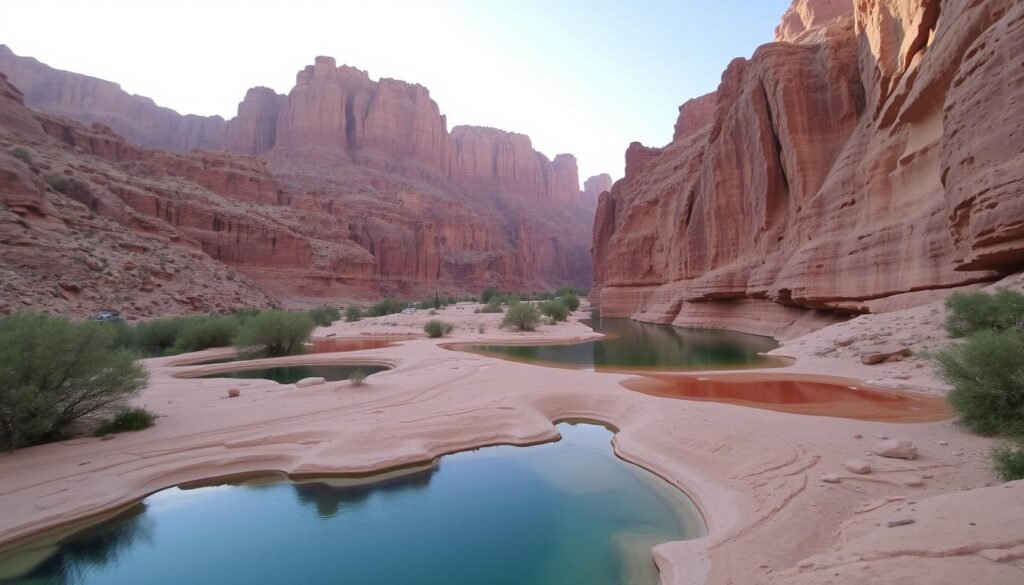
Both Muscat and the natural wonders of Wadi Shab and Daymaniat Islands showcase the diversity and beauty of Oman, making it a unique and exciting destination in the Middle East.
Jordan: Ancient Wonders and Natural Beauty
From the ancient city of Petra to the serene waters of the Dead Sea, Jordan is a treasure trove of historical and natural wonders.
Petra: The Rose City Carved in Stone
Petra, one of the New Seven Wonders of the World, is an archaeological site carved into the sandstone cliffs by the Nabataeans in the 6th century BC. This ancient wonder is a testament to Jordan’s rich history and a must-visit place for anyone traveling to the region.
Visitors can explore the narrow canyon known as the Siq, which leads to the magnificent Treasury building, and then venture further into the vast archaeological park.
To experience Petra’s grandeur, visitors can book tickets online in advance.
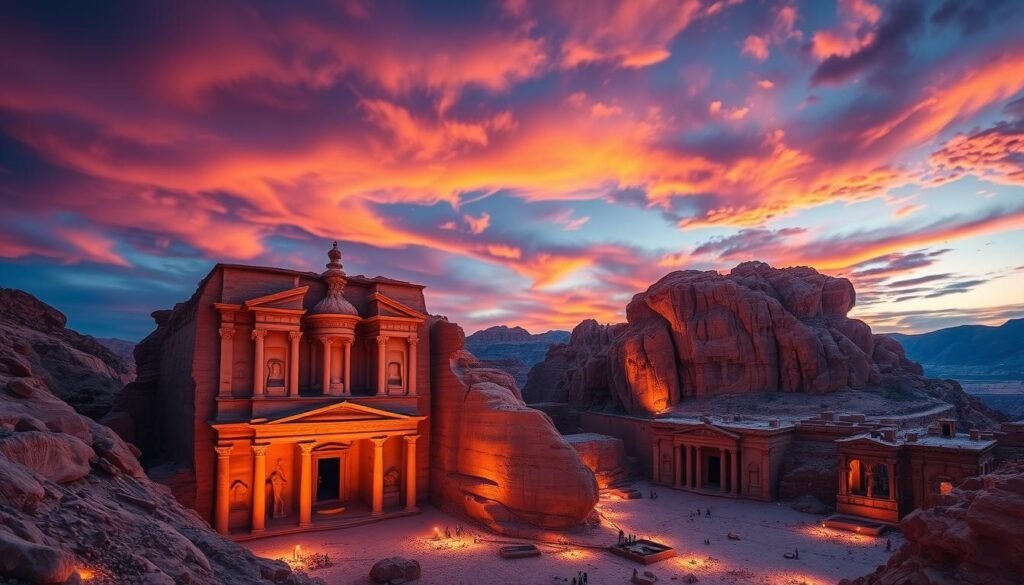
The Dead Sea: Floating in the Lowest Point on Earth
The Dead Sea, situated at the lowest point on Earth, is renowned for its high salt concentration, making it a unique natural beauty spot. Visitors can float effortlessly on its surface due to the dense water.
The area around the Dead Sea is also known for its mineral-rich mud, which is believed to have therapeutic properties, attracting those seeking beauty treatments.
The Dead Sea is a natural wonder shared between multiple countries, including Jordan, Israel, and Palestine, representing both environmental challenges and opportunities for cooperation.

Egypt: Land of Pharaohs and Pyramids
With its rich pharaonic history and diverse landscapes, Egypt is a destination that promises an unforgettable journey through time and terrain. From the majestic Pyramids of Giza to the serene landscapes of the desert, Egypt offers a unique blend of historical and natural wonders.
Valley of the Kings: Royal Tombs and Ancient History
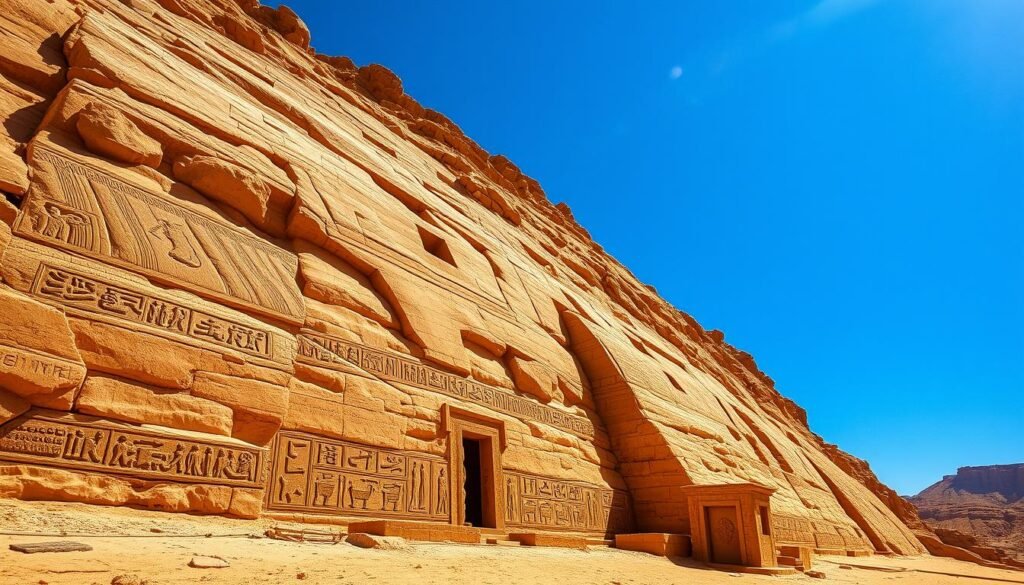
The Valley of the Kings is a vast burial ground for the pharaohs of the New Kingdom, showcasing intricate tombs and ancient hieroglyphics that narrate the history and mythology of ancient Egypt. Visitors can explore the elaborate tombs, including that of Tutankhamun, and experience the rich history of this ancient civilization.
This site is not just a collection of tombs; it’s a window into the beliefs, rituals, and lives of the pharaohs, making it a must-visit for anyone interested in Egyptology.
The Black and White Desert: Otherworldly Landscapes

The Black and White Desert in Egypt is a unique and relatively unknown destination that showcases the country’s natural beauty beyond the famous historical sites. Located in the western part of Egypt, this stunning desert is easily accessible from Cairo, making it a perfect getaway for desert lovers and adventure seekers.
The landscape of the Black and White Desert is unlike anything you might expect, with the White Desert featuring snow-white rock formations and vast sand dunes that feel otherworldly, while the Black Desert, named for its dark volcanic stones, offers a stark contrast.
- The White Desert National Park features surreal chalk rock formations that resemble an arctic landscape in the middle of the desert.
- The contrasting Black Desert gets its distinctive color from volcanic materials and mountains capped with black dolerite.
- Camping under the stars in this remote desert offers one of Egypt’s most magical experiences.
Turkey: Where East Meets West
Located at the crossroads of Europe and Asia, Turkey offers a fascinating blend of cultures and landscapes. This unique positioning has made Turkey a captivating destination for travelers from around the world, drawn to its rich history and diverse beauty.
Istanbul: A City Spanning Two Continents
Istanbul is a vibrant city that straddles two continents, offering a unique blend of European and Asian cultures. Visitors can explore the city’s historic landmarks, such as the Hagia Sophia and the Blue Mosque, or stroll through bustling bazaars filled with colorful textiles and local handicrafts.
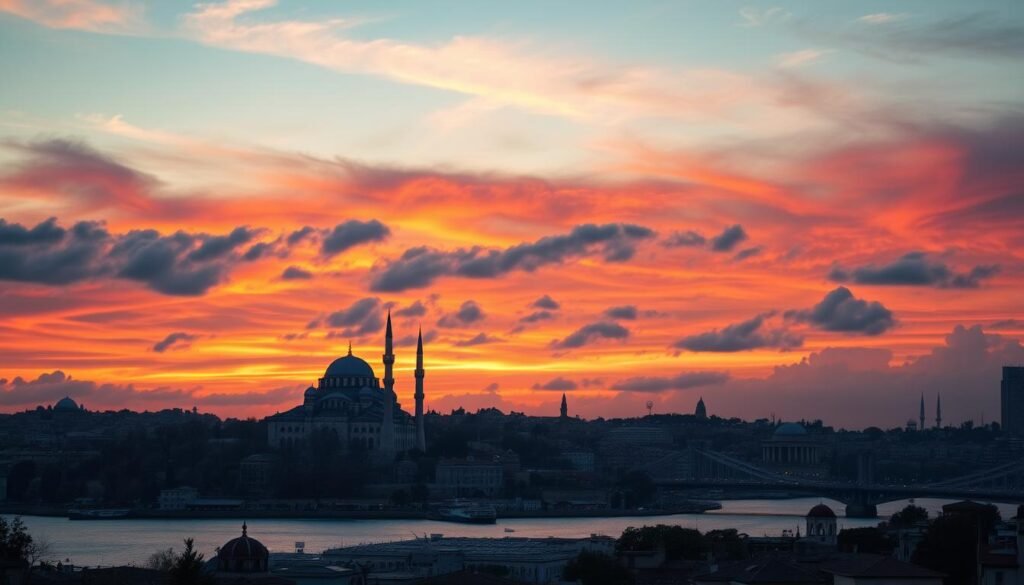
Cappadocia: Fairy Chimneys and Hot Air Balloons
Cappadocia is known for its surreal landscape of fairy chimneys and honeycombed hills, created by millions of years of erosion. The region’s unique geology has also led to the development of underground cities, now museums, which showcase the area’s history. Visitors can experience the breathtaking beauty of Cappadocia from above on a hot air balloon ride at sunrise.
Cappadocia’s desert-like terrain belies its rich agricultural history, with vineyards and orchards thriving in the fertile valleys between the dramatic rock formations.

Turkey’s diverse regions offer a wealth of experiences for travelers, from the vibrant streets of Istanbul to the surreal landscapes of Cappadocia. Whether exploring ancient ruins, relaxing on Mediterranean beaches, or experiencing the warm hospitality of the Turkish people, visitors are sure to be enchanted by this captivating place.
Saudi Arabia: The Kingdom Opening Its Doors
Saudi Arabia is opening its doors to a new world of travel experiences. With its rich history and breathtaking landscapes, the kingdom is becoming a must-visit place for travelers worldwide. As part of its Vision 2030 initiative, Saudi Arabia is embracing tourism, unveiling its cultural treasures and natural beauty.
AlUla: Ancient Tombs and Desert Landscapes
AlUla, an ancient city, is a testament to Saudi Arabia’s historical significance. This desert oasis is home to numerous archaeological sites, including the magnificent Hegra, a UNESCO World Heritage Site. Visitors can explore the ancient tombs carved into the sandstone outcrops, a marvel that reflects the ingenuity of the Nabatean civilization.
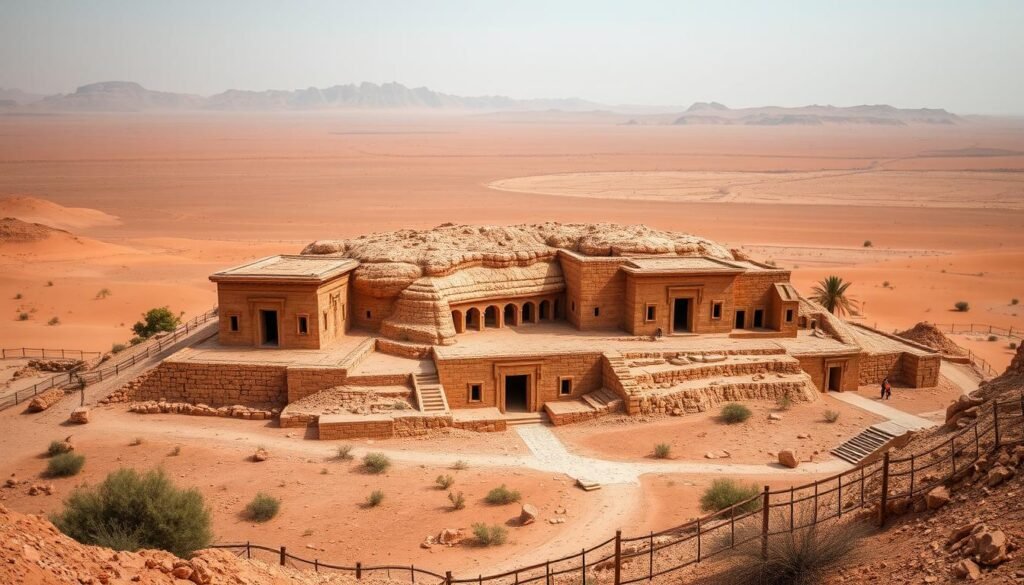
Hegra (Madain Saleh): Saudi Arabia’s Petra
Hegra, also known as Madain Saleh, is an ancient city that boasts more than 100 monumental tombs, a testament to the history and culture of the Nabateans. This archaeological site is often referred to as Saudi Arabia’s Petra, due to its similarities with the famous Jordanian ruins. The site’s remote location in the desert adds to its mystique, making the journey an integral part of the experience.
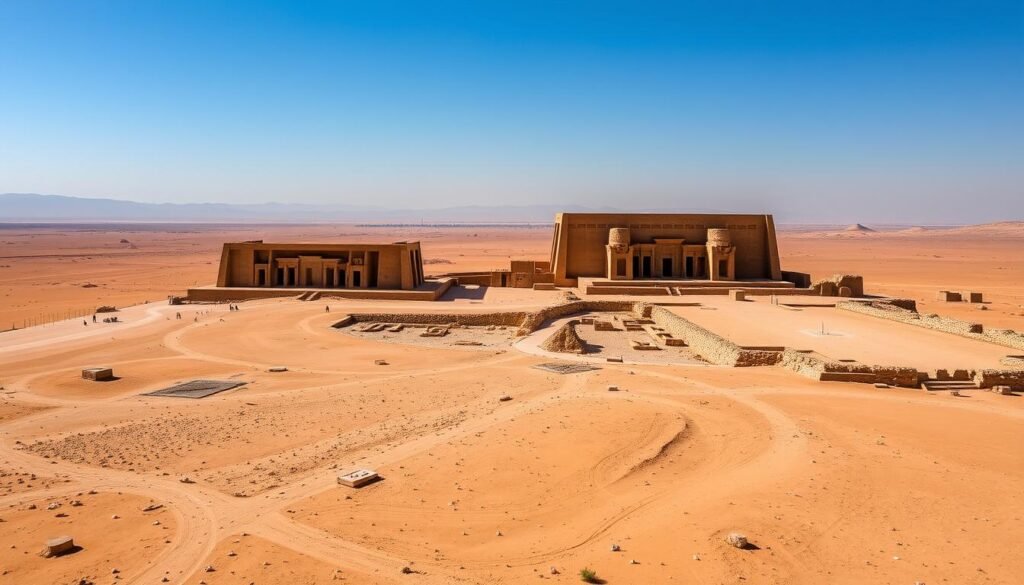
In conclusion, Saudi Arabia’s AlUla and Hegra are destinations that offer a unique blend of history, culture, and natural beauty, making them must-visit places for any traveler.
Israel and Palestine: Holy Lands and Sacred Sites
From the sacred walls of Jerusalem to the vibrant streets of Tel Aviv, Israel and Palestine offer a unique travel experience. This region is a treasure trove of history, culture, and natural beauty, making it a fascinating destination for travelers.
Jerusalem: Where Three Religions Converge
Jerusalem is a city that feels indestructible, with a spiritual allure and historical magnetism that draws millions of visitors. Destroyed and rebuilt over two millennia, it embodies a connection between the Middle East and ancient Rome. The aromas of incense and coffee waft through the markets and diverse quarters, enhanced by the spices used in local cooking.
Contemporary life in Jerusalem reflects its past, with modern architecture standing alongside ancient ruins. History is inescapable across the city, from exposed ruins along the streets to artifacts hidden beneath the soil.
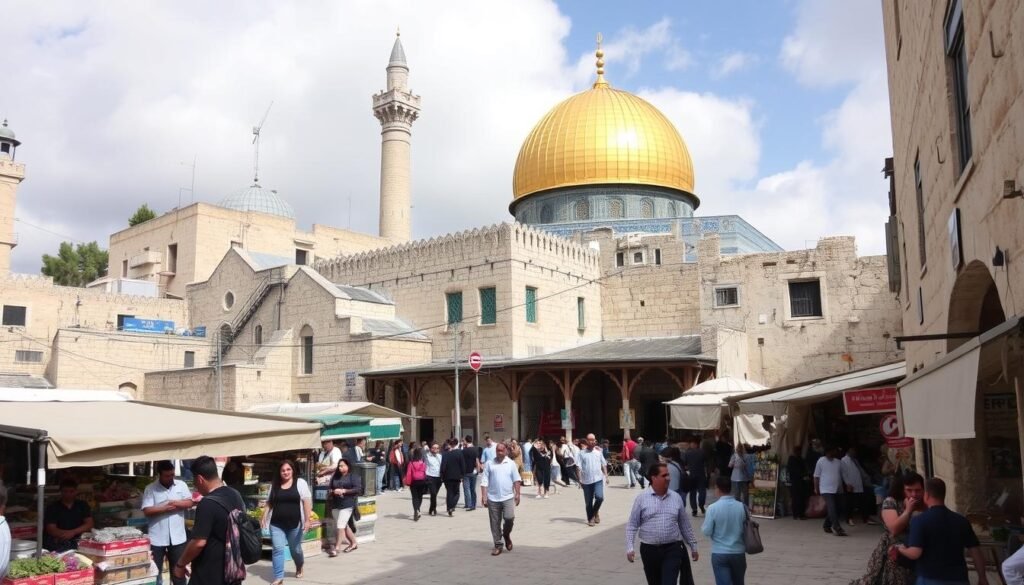
Tel Aviv: Mediterranean Beaches and Vibrant Culture
Tel Aviv presents a striking contrast to Jerusalem, with its Mediterranean beaches, modernist architecture, and cosmopolitan atmosphere. The city‘s 14-kilometer coastline features well-maintained beaches, each with its own distinct personality.
Tel Aviv’s UNESCO-recognized White City is home to the world’s largest collection of Bauhaus architecture, with over 4,000 buildings in this distinctive style. The ancient port of Jaffa, now part of Tel Aviv, offers a historical counterpoint to the modern city with its stone alleyways and archaeological sites.
The vibrant street life and café culture in Tel Aviv have earned it comparisons to Mediterranean cities like Barcelona, making it a favorite among travelers seeking both cultural experiences and beach relaxation.

Lebanon: Phoenix of the Mediterranean
Lebanon, known as the Phoenix of the Mediterranean, is a country that has risen from the ashes, offering a rich tapestry of history, culture, and natural beauty. This resilience is reflected in its vibrant cities, historical landmarks, and the warmth of its people.
Beirut: The Paris of the Middle East
Beirut, the capital city, is a fascinating blend of French colonial history and Arabic culture, earning it the nickname “The Paris of the Middle East.” Visitors can explore its history through Beirut walking tours, discovering hidden gems and historical landmarks.
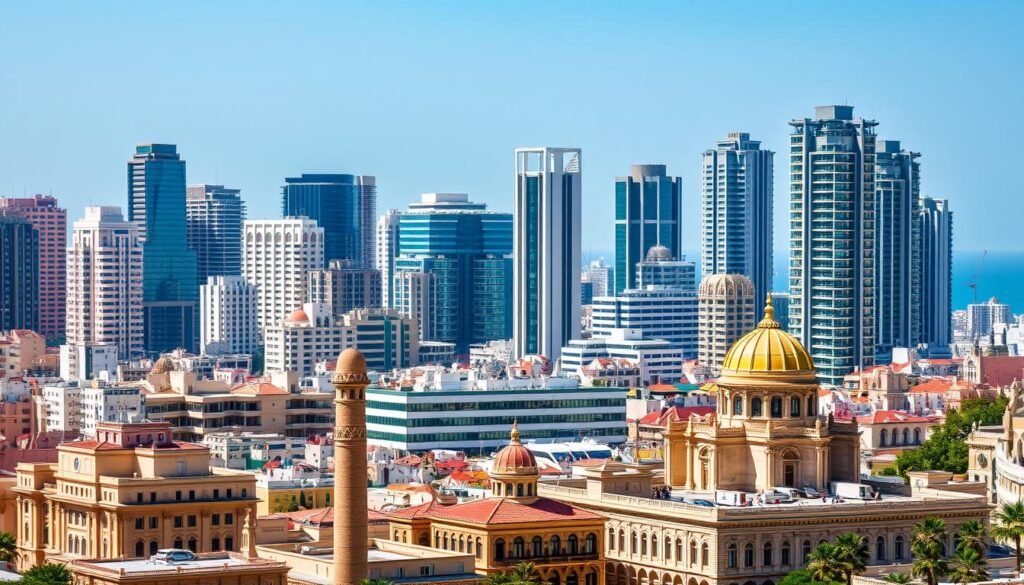
Baalbek: Magnificent Roman Ruins
Baalbek is home to some of the world’s most impressive Roman ruins, including the Temple of Bacchus and the Temple of Jupiter. The site’s grandeur and history are awe-inspiring, with massive stone blocks and columns that reflect the architecture of a bygone era.
The ruins of Baalbek are not just a testament to Roman engineering but also a place where one can experience the layers of history, from Phoenician foundations to Roman temples and later modifications.
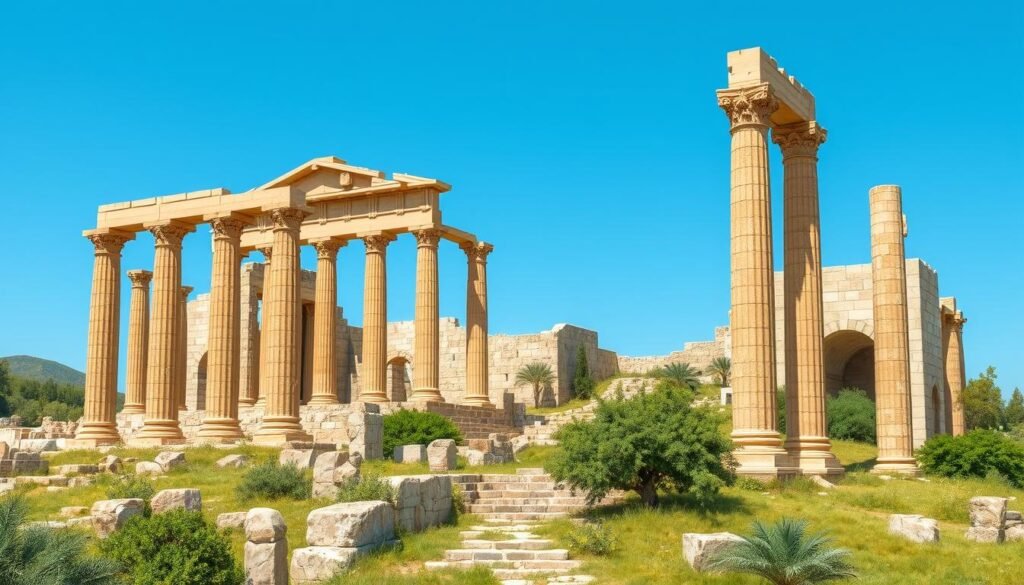
Qatar and Bahrain: Gulf Pearls
The countries of Qatar and Bahrain are gems in the Gulf, offering a blend of traditional and contemporary experiences. Both nations boast rich histories, cultural landmarks, and modern marvels that attract visitors from around the world.
Doha: Modern Architecture and Cultural Heritage
Doha, the capital city of Qatar, is a thriving metropolis that seamlessly blends modern architecture with cultural heritage. Visitors can explore the historic Al Zubarah Fort, a UNESCO World Heritage site, and marvel at the futuristic designs of the Katara Cultural Village.
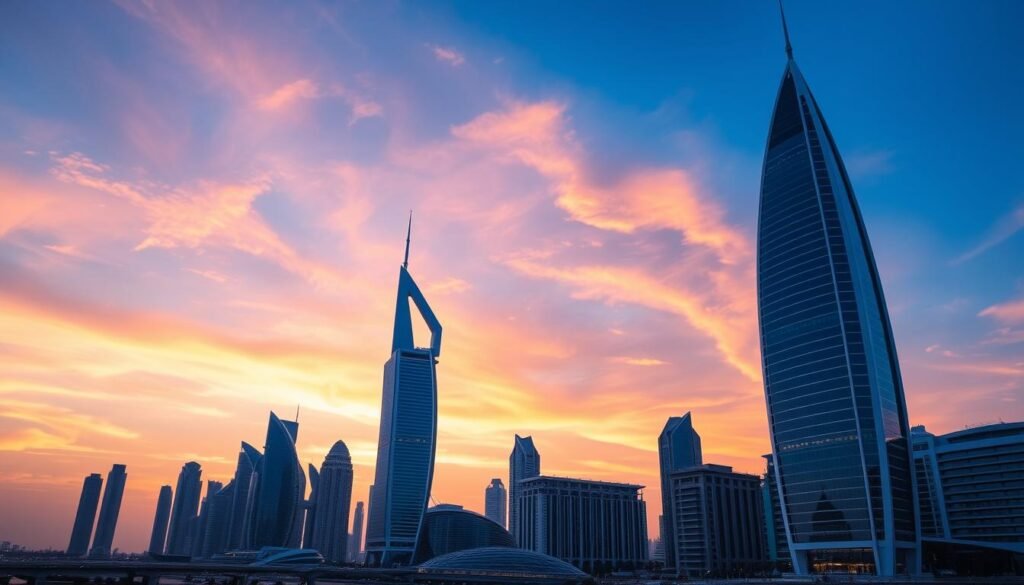
Manama: Bahrain’s Historic Capital
Manama, the capital of Bahrain, is a city that effortlessly blends modernity with history. It’s a place where ancient and contemporary coexist, with historical landmarks standing alongside towering glass buildings. The Bahrain National Museum provides an excellent introduction to the country’s 5,000-year history, while the Bahrain Fort (Qal’at al-Bahrain) showcases archaeological layers spanning 4,500 years of continuous human occupation.
The city’s position on an island archipelago creates a distinctive relationship with the sea, which has shaped Bahrain’s history, culture, and economy. Visitors can experience traditional market life at Manama’s Bab Al Bahrain, marking the entrance to the old souq.
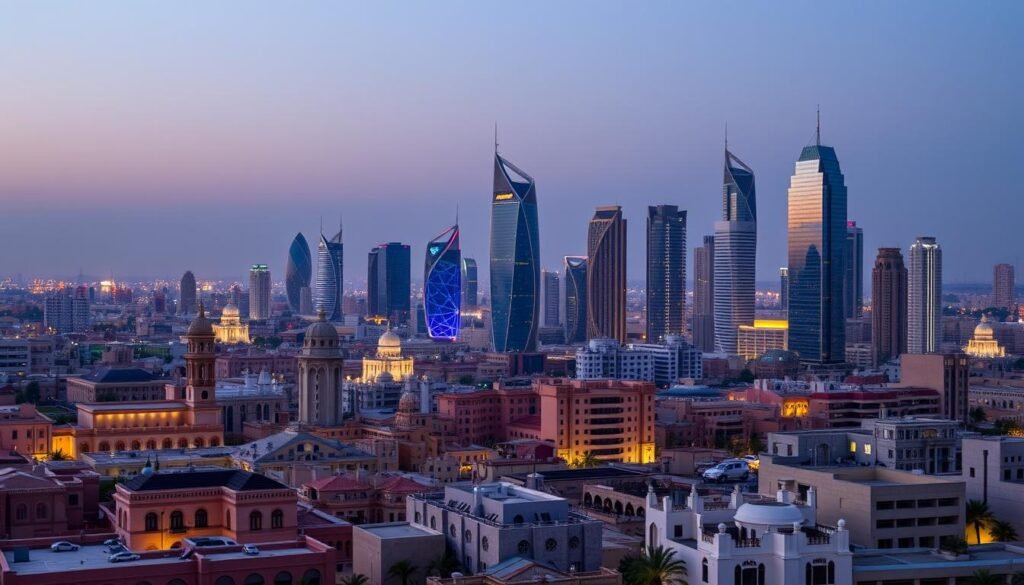
In conclusion, Qatar and Bahrain are two Gulf countries that offer a unique blend of traditional and modern experiences. From Doha’s futuristic architecture to Manama’s historic landmarks, these cities are must-visit destinations for anyone interested in exploring the rich history and culture of the Middle East.
Off-the-Beaten-Path Middle Eastern Destinations
Beyond the popular tourist spots, the Middle East harbors a wealth of hidden gems waiting to be discovered. For travelers seeking a more authentic experience, these off-the-beaten-path destinations offer a unique blend of culture, history, and natural beauty.
Kuwait’s Failaka Island: History and Tranquility
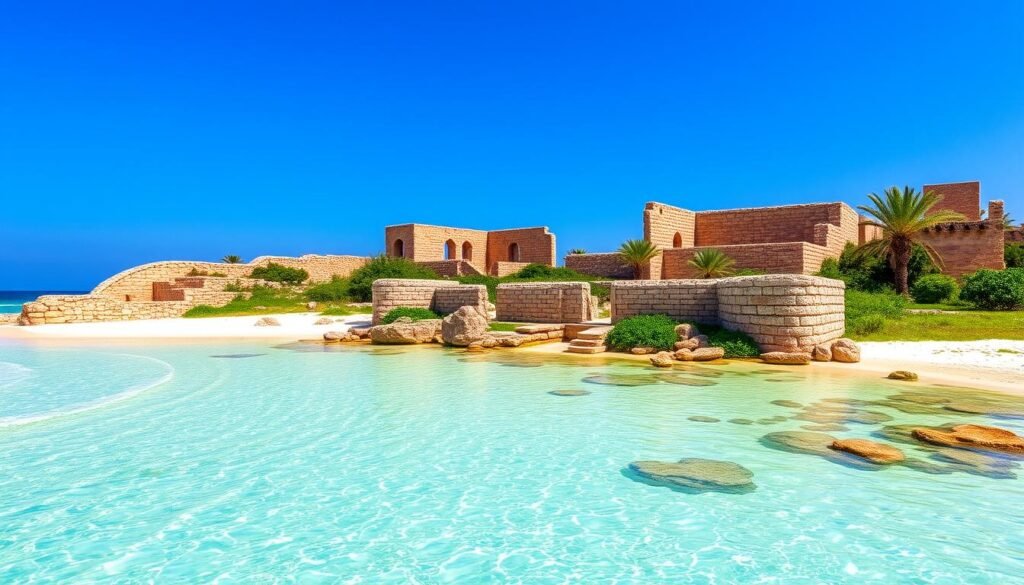
Failaka Island, located off the coast of Kuwait, is a tranquil retreat steeped in history. Visitors can explore ancient ruins, enjoy the serene beaches, and experience the island’s unique charm. Day trips to Failaka Island offer a glimpse into Kuwait’s rich past and a chance to unwind in a peaceful setting.
Ras Al Khaimah: Adventure and Relaxation
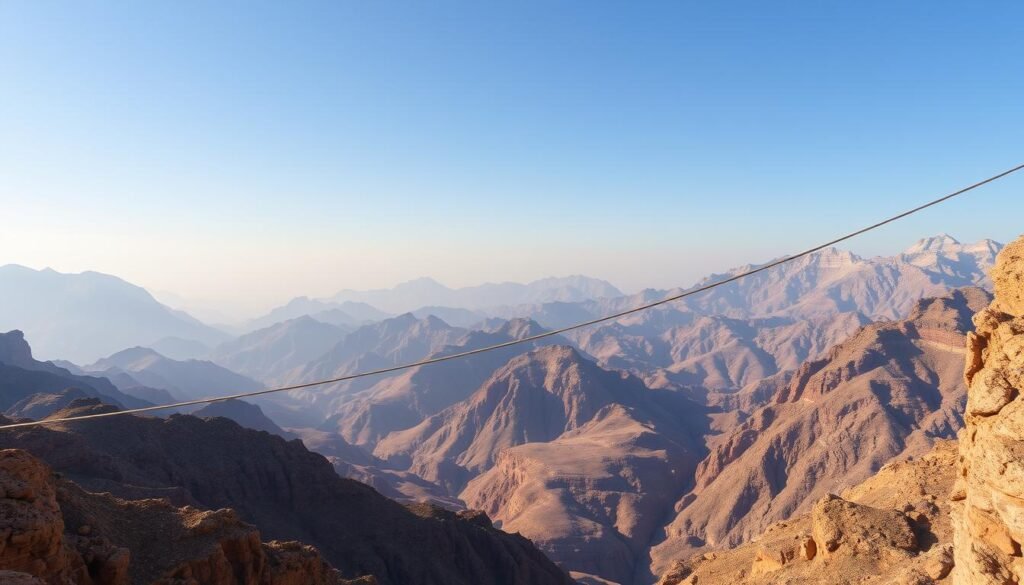
Ras Al Khaimah is a haven for adventure seekers and those looking to relax. The emirate boasts the Jebel Jais mountain range, home to the world’s longest zipline, offering breathtaking views and thrilling experiences. With its pristine beaches, historical sites like Dhayah Fort, and the National Museum of Ras Al Khaimah, this destination combines adventure with cultural depth, making it an ideal alternative to more crowded spots in the UAE.
The diversity of landscapes in Ras Al Khaimah, from towering mountains to 64 kilometers of pristine beaches, ensures that there’s something for every kind of traveler. Whether you’re interested in hiking, trying the world’s longest zipline, or simply relaxing on the beach, Ras Al Khaimah offers a unique and unforgettable experience.
Natural Wonders of the Middle East
With its unique blend of geography and climate, the Middle East is a nature lover’s paradise. The region is home to a diverse range of natural wonders, from vast deserts to stunning coastlines.
Liwa Desert: Endless Dunes and Starry Skies

The Liwa Desert is a must-visit destination for adventure seekers. The endless dunes and starry skies offer a truly unique experience. Visitors can enjoy a thrilling desert safari, camping under the stars, and taking in the breathtaking views of the surrounding landscape.
Dhofar Coastline: Oman’s Tropical Paradise
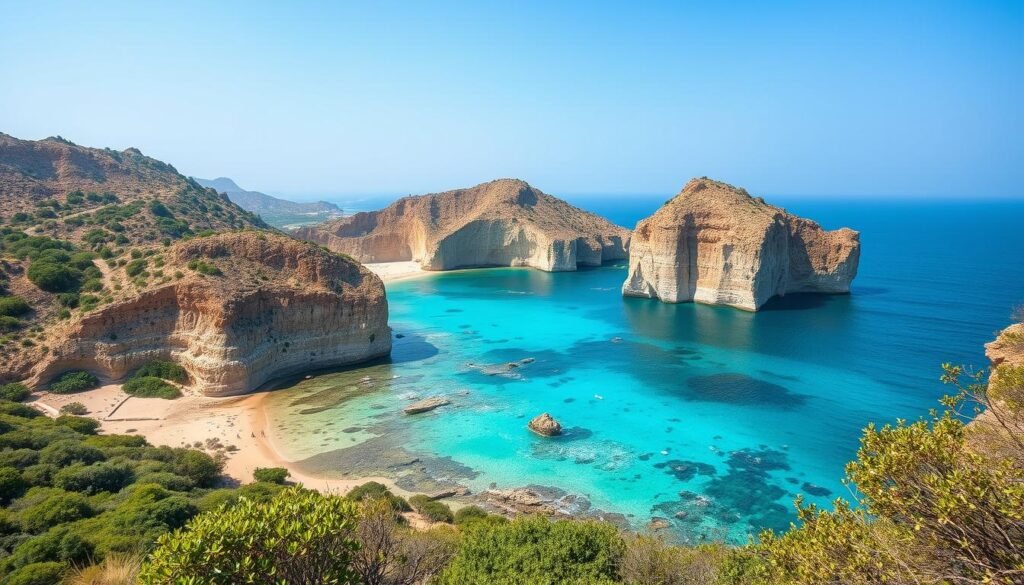
The Dhofar coastline in southern Oman is a tropical paradise, boasting lush greenery during the khareef (monsoon) season. The region’s pristine beaches stretch for miles, offering solitude and natural beauty. The dramatic limestone cliffs plunge into the turquoise Arabian Sea, creating spectacular viewpoints and hidden coves.
The Dhofar coastline represents one of the Middle East’s most surprising landscapes, with its unique microclimate supporting diverse ecosystems, including frankincense trees. The region’s remote location has preserved its natural beauty, making it perfect for travelers seeking unspoiled landscapes and authentic experiences.
Cultural Experiences Not to Miss
The Middle East is a region where ancient traditions and modern attractions come together in a vibrant cultural tapestry. Visitors can immerse themselves in a rich cultural heritage that spans centuries, from bustling markets to serene desert landscapes.
Traditional Souks and Bazaars
Exploring traditional souks and bazaars is a must-do experience in the Middle East. These bustling markets offer a sensory overload of sights, sounds, and scents, with vendors selling everything from precious jewels to fragrant spices. Visitors can haggle for unique souvenirs, sample local delicacies, and soak up the lively atmosphere that permeates these historic trading centers.
Desert Camping with Bedouins

Desert camping with Bedouins offers one of the Middle East’s most authentic cultural experiences. Guests can speed across towering sand dunes, enjoy traditional Bedouin hospitality, and gain insights into the nomadic lifestyle that has endured for centuries. Evenings around the campfire often feature traditional music and storytelling, creating memorable connections to the desert landscape and its people.
The experience varies across different Middle Eastern countries, from Jordan’s Wadi Rum to Oman’s Wahiba Sands, each offering distinct cultural traditions and breathtaking desert landscapes. Whether it’s stargazing under the desert sky or savoring regional specialties cooked over open fires, desert camping with Bedouins is an unforgettable adventure that combines cultural immersion with natural beauty.
Practical Tips for Middle Eastern Travel
As you prepare for your journey to the Middle East, understanding the local customs, safety guidelines, and best travel times is essential. The region, known for its rich history and diverse cultures, requires thoughtful planning to ensure a smooth and enjoyable trip.
Best Times to Visit Different Regions
The Middle East encompasses a variety of climates, from deserts to Mediterranean coastlines. Generally, the best time to visit most countries in the region is during the spring (March to May) and autumn (September to November), when temperatures are mild and pleasant. For instance, countries like the UAE, Oman, and Jordan are ideal to visit during these periods.
Cultural Etiquette and Dress Codes
Understanding and respecting local customs is crucial when traveling to the Middle East. Dress modestly, covering your shoulders and knees, especially when visiting mosques or traditional areas. In some countries like Iran and Saudi Arabia, there are strict dress codes that must be adhered to. Learning a few basic phrases in Arabic or the local language can also go a long way in showing respect for the culture.
Safety Considerations for Travelers
While many parts of the Middle East are considered safe for travelers, it’s always wise to stay informed. Countries like the UAE, Oman, and Qatar are known for their low crime rates. However, it’s essential to check the latest travel advisories and be aware of local conditions. As a solo female traveler, I have visited countries like Egypt and Dubai multiple times without major issues, aside from some mild hassles and scams.
| Country | Best Time to Visit | Safety Rating |
|---|---|---|
| UAE | October to April | High |
| Oman | September to November, March to May | High |
| Jordan | March to May, September to November | High |
Planning Your Middle Eastern Adventure
To truly experience the wonders of the Middle East, travelers must plan their trip with care, considering the region’s vast geographical and cultural expanse. With so many incredible destinations, from the ancient ruins of Jordan to the futuristic skylines of Dubai, a well-planned itinerary is essential.
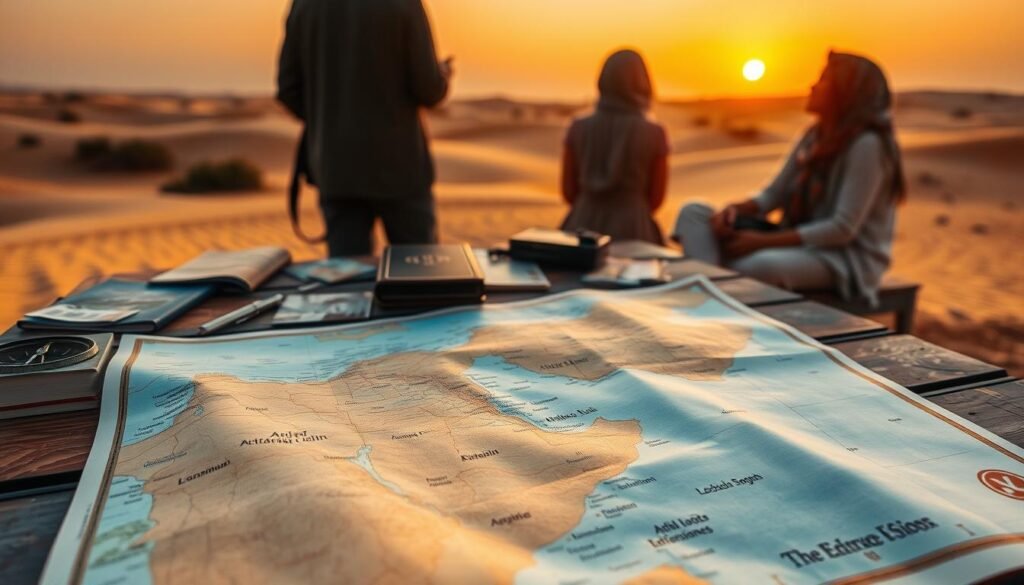
Suggested Itineraries for Different Timeframes
When planning a trip to the Middle East, the duration of your stay will significantly influence your itinerary. For a short trip, focusing on one or two countries is advisable. For instance, you could spend 5 days exploring Dubai’s modern marvels and then head to Abu Dhabi for a cultural immersion. For longer trips, consider exploring multiple countries. A 2-week itinerary could include visits to Jordan’s Petra, Egypt’s Pyramids, and Israel’s Jerusalem, providing a rich tapestry of historical and cultural experiences.
- For a 7-day trip, focus on one country, such as the UAE or Jordan.
- For a 14-day trip, consider visiting multiple countries, like Turkey, Egypt, and Jordan.
Transportation Between Countries
Transportation is a crucial aspect of planning your Middle Eastern adventure. Flying remains the most efficient way to travel between countries, with major hubs like Dubai, Doha, and Istanbul offering excellent connections. Gulf carriers such as Emirates, Qatar Airways, and Etihad provide world-class service, often at competitive prices. However, it’s essential to research land border crossings, as some may be complicated or closed due to political situations.
Within countries, transportation options vary widely. Cities like Dubai and Istanbul have efficient metro systems, while more remote areas may require shared taxis or buses. For those with limited time, focusing on places to visit in the Middle East that are well-connected by direct flights can maximize sightseeing opportunities while minimizing transit time.
Conclusion: The Timeless Appeal of the Middle East
The Middle East, with its rich tapestry of history, culture, and natural beauty, stands as a testament to the wonders that await travelers. This region continues to captivate visitors with its unparalleled combination of ancient history, cultural richness, and natural wonders that span deserts, mountains, and seas.
From the architectural marvels of Iran’s mosques to the otherworldly landscapes of Egypt’s White Desert, the Middle East offers experiences that cannot be replicated elsewhere in the world. The best places to visit in the Middle East provide windows into civilizations that have shaped human history, with archaeological sites and living traditions that connect past and present.
Despite media portrayals that often focus on conflicts, the reality of traveling in the Middle East typically involves encountering extraordinary hospitality and warmth from local people. As more countries in the region develop their tourism infrastructure and ease visa restrictions, there has never been a better time to visit the Middle East and discover its timeless appeal.
In conclusion, the Middle East is a region that promises to captivate and inspire any traveler. With its diverse landscapes and historical landmarks, it is a destination that offers something for everyone. Whether you’re drawn to the history, beauty, or wonders of the region, the Middle East is sure to leave a lasting impression.

